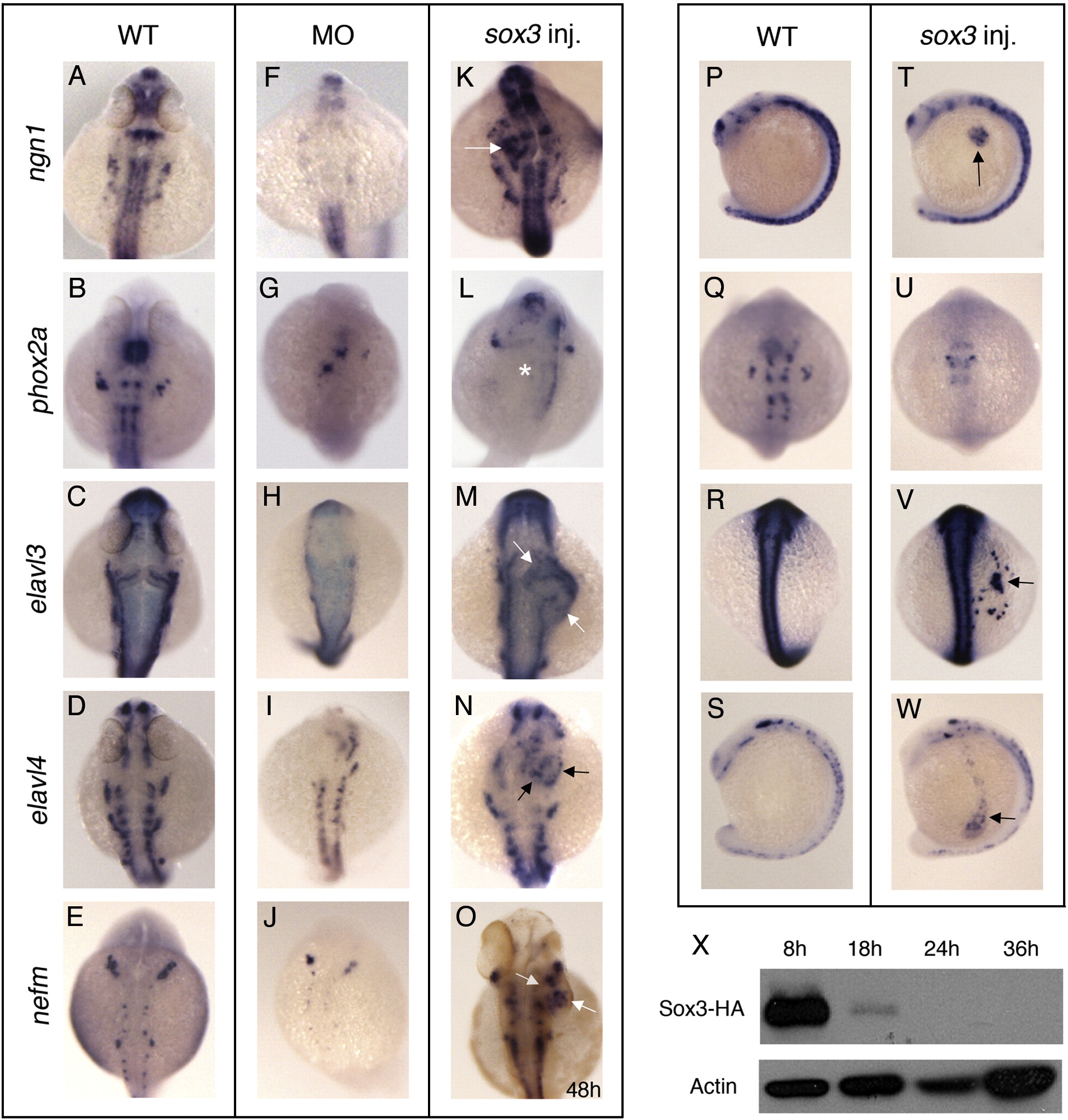Fig. 8
Fig. 8 Sox3 is required for neuronal differentiation. (A–O) Dorsal view of in situ hybridised embryos aged 24 hpf unless otherwise indicated in the panel. Wild-type embryos (A–E) were analysed for the expression of several markers of differentiating neurons (marker genes indicated to the left of panels) and compared to morphant embryos (F–J) and embryos injected with sox3 mRNA at the 16–32 cell stage (K–O). (F–J) Morphant embryos show significant disruption of all markers analysed. These are ngn1 (F, 27/42 embryos), phox2a (G, 37/51), elavl3 (H, 9/11), elavl4 (I, 6/23) and nefm (J, 16/21). (K–O) Sox3 over-expression causes disruption of phox2a expression (L, indicated by asterisk), but does not disrupt the expression of the other markers analysed, ngn1 (K, 9/32), elavl3 (M, 15/39), elavl4 (N, 14/28) and nefm (O, 3/19), which are all expressed strongly in regions of ectopic neural tissue induced by Sox3 (indicated by arrows). (P–W) View of wild-type (P–S) and sox3 (16–32 cell) injected (T–W) embryos aged 18 hpf (P, T, S, W viewed laterally; Q, U, R, V viewed dorsally). As at 24 hpf, Sox3 over-expression at this stage causes disruption of phox2a (U, 11/36), whilst ngn1 (T, 9/38), elavl3 (V, 18/39) and elavl4 (W, 6/26) are expressed strongly in ectopic tissue (arrows). (X) Western blot using anti-HA showing that exogenous Sox3 protein has decreased dramatically by 18 hpf and is completely absent by 24 hpf.
Reprinted from Developmental Biology, 320(1), Dee, C.T., Hirst, C.S., Shih, Y.H., Tripathi, V.B., Patient, R.K., and Scotting, P.J., Sox3 regulates both neural fate and differentiation in the zebrafish ectoderm, 289-301, Copyright (2008) with permission from Elsevier. Full text @ Dev. Biol.

